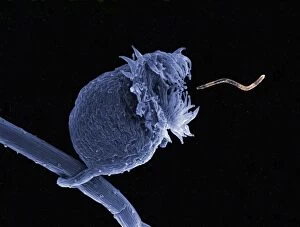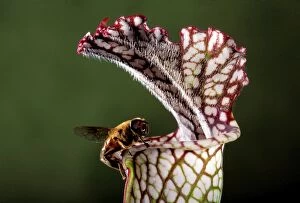Carnivorous Plants Collection (#3)
"Carnivorous Plants: Nature's Deadly Beauties" Step into the fascinating world of carnivorous plants, where beauty and danger intertwine
For sale as Licensed Images
Choose your image, Select your licence and Download the media
"Carnivorous Plants: Nature's Deadly Beauties" Step into the fascinating world of carnivorous plants, where beauty and danger intertwine. Meet the Dionaea muscipula, commonly known as the Venus Fly Trap, a captivating specimen that lures unsuspecting prey with its vibrant colors and delicate petals. In a mesmerizing display of survival instincts, watch as a Dragonfly becomes ensnared in the lobes of this flowering plant, showcasing nature's intricate web of life. Hovering nearby is a Housefly, cautiously observing the deadly trap set by another Venus Fly Trap. With lightning-fast reflexes, one set of lobes snaps shut around its unfortunate victim while we witness this predatory dance unfold before our eyes. Venturing into aquatic realms, we encounter the Waterwheel plant (Aldrovanda vesiculosa), an elegant carnivorous wonder lurking beneath tranquil waters. Mosquito larvae unknowingly become entangled in its deceptive tendrils—a reminder that even stillness can hide treacherous intentions. Traveling to Australia, we meet the Fork-leaved sundew (Drosera bipinata), native to this diverse land down under. Its leaves unfurl like delicate fingers adorned with glistening droplets—sticky traps designed to capture unsuspecting insects seeking refuge on their velvety surface. Intriguingly curled flower buds beckon us towards the Rosy sundew (Drosera hamiltonii) in a controlled studio environment. This exquisite species showcases nature's artistry at every stage of growth—an enchanting spectacle waiting to be unveiled. The Round-leaved sundew (Drosera rotundifolia) captivates us from up close with its sticky droplets delicately poised at each leaf tip—a testament to evolution's ingenuity in adapting these plants for survival amidst nutrient-poor environments. Transported across continents and time periods through lithographs and engravings, we witness the enduring fascination with carnivorous plants.





